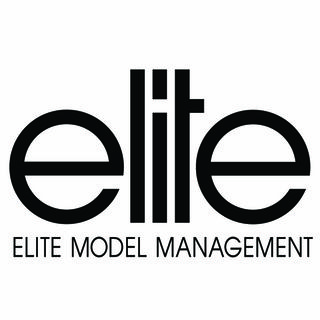The beginning of the 21st century brought the first major change in the way agencies had done business in nearly 30 years.
The old ways remain, and are still relied upon for many purposes, but the Internet has fundamentally changed the way models, agencies and clients communicate with each other. It has also made information about modeling widely available to aspiring models, although that is sometimes a mixed blessing.
Locating Agencies and Models
Search engines and model industry reference sites on the Internet enable models and clients to find agencies suitable for them. Tools like that should be used by models to find out who to submit applications to and, just as important, who not to. Sites and URLs on the Internet change constantly. As of this writing some useful sources of information about agencies include: www.rasource.com, www.modelnetwork.com, www.workbook.com, www.lebook.com, www.models.com
Locating Support Personnel
Model agencies aren’t the only things of interest to models. If you are trying to put together a photo shoot and need crew
members (photographers, stylists, makeup artists, hair stylists) to work with you (paid or unpaid) you can advertise for them on sites devoted to modeling and the support specialties. Many “modeling sites” don’t deal much with fashion and commercial modeling, but a few do: www.makeupartistchat.com and www.beautytech.com
Model Agency Communications
Clients want models; agencies need to get information to them. The traditional way is to send over a stack of portfolios or
composite cards and let the client choose who they want to see. That’s a burden on the models to have the cards printed, and on the agencies (or the models, if their agency passes on expenses) to pay for sending things to the client. For clients outside of the city, cards may have to be sent overnight, which can get expensive. For their part, clients may want to send reference pictures to an agency so the agent can see what an ad will look like, or what kind of person the casting director wants to see.
Most clients are now accepting the Internet as a means for getting initial screening information. They may get a package on
Modelwire, an email with pictures or URLs to model’s online comp cards, or simply look at models on the agency website to
make their choices. For clients in remote cities it’s not unusual for a job to be cast entirely off the Internet, and it’s becoming
more common even in the major market cities. After the casting is done, clients can use email to send contracts, call sheets, releases and support information to the agency for review and signature if needed. The fax machine is still used, but email is easier and better quality.
Although few agencies prefer it, many will accept email submissions from aspiring models, which can greatly reduce the
time and cost of a model bringing himself to the attention of the agency. Models can also get releases, contracts, call sheets, shoot instructions and scripts for upcoming jobs through email.
Model’s Personal Sites
Many models have personal sites on the Internet, either on their own domains or as pages on a model exposure site. They
can be very useful for communicating with agencies or other professionals. Rather than include information and pictures in an email, you can simply include the URL for your website and let the other person click on it. There are pressures on models to produce the wrong kind of personal site. Model listing services want you to use their format, which may be cluttered or include lots of things inappropriate to professional communications. Models see (or are sent) ads from web site designers, all of whom want to produce something for a price, and most of whom want to make it look like something that
either justifies their price or showcases their skills. Models can get self-indulgent in what they put on the site. All of that is bad. A model may choose to have a personal site with lots of bells and whistles, but that’s not what she should use in professional communications. It’s like a resume, or your application letter to an agency. Keep it simple!
The best choice is your own domain. It isn’t all that expensive; some places will let you buy a domain and host a small
site with email for less than $50 a year. They also often have simple website design tools to help you produce the pages. If you absolutely have to save money and go to one of the freebie site companies (such as Yahoo, MSN, or worst of all, myspace.com) make sure your correspondent does not have to become a member of the site, join anything or use passwords to see your page. If they do, most professional clients will just go away.
The first page of the site should contain your name, location, stats, contact information and a small number of pictures. You
might choose to have one large (400-500 pixels high or so) headshot on the first page, but all other pictures should be thumbnails that a viewer can click on to bring up a larger image. That saves kilobytes; kilobytes equate to time, and professionals want a site that loads very quickly even in this broadband age. Site layout should be simple, clean and attractive. Do not clutter it up with complex graphics or lots of different fonts. Keep animation to a minimum. Zero animation is best. If you want to have a more complex site and fancy animation, do it on another page that a viewer can choose or not, while still first seeing everything they need to make choices about you. Do not include music. No pop-ups or advertising on your page! Keep it clean. Professionals don’t want to have to spend their time closing popup ads or looking for the mute button.
Do not include an excess of biographical data. Professional modeling experience, if you have it, should be briefly described.
Nothing else.
Your contact information on the site should not include your telephone number or home address. Don’t ask the viewer to
contact an agent or manager unless you have a mainstream, brick and mortar agency that handles all your bookings. Experienced models with multiple agencies often have personal websites with additional pictures on them, but no contact data. That allows their agencies to refer clients to the site to the additional pictures without running the risk of the client doing something stupid with the contact information.
Model-Related Web Sites
In days gone by models had few good places to get advice from. The best choice was a good agency, but agents tend to be
stingy with advice to models they don’t represent. They have to be: so many models, so little time.
The next best source was the books on modeling. Many books don’t deal much with the kinds of modeling a reader should be doing; they may not deal with the model’s particular situation or, if they do, the model may not recognize it. Times change, and books get outdated. And not all of them are written by people who really understand the industry.
After that, the choices got pretty dismal. The next-to-worst source is the model’s friends and family. Few of them understand the realities and complexities of the business. Even those who have been models have personal experiences which may have little relevance to an aspiring model’s situation. If a person could arrange to talk to advertising and publishing industry professionals it would help, but even they have very limited insight into anything but their own experience with the business.
The worst possible source of information is people who have something to sell you. They may be honorable, knowledgeable
people (although a too-high percentage is not). But they are motivated to tell you what you want to hear or what will get you to buy from them. These people include modeling schools, photographers, “model managers” and vendors of other modeling-related services.
Times change, and information sources have changed with them. The Internet has provided us with countless sources of
information. These include advice sites by governmental and private watchdog agencies which tend to be concerned with
telling you how to avoid scams. Neither of these gives in-depth advice and both over-simplify the problem and proposed
solutions:
The Federal Trade Commisson:
http://www.consumer.ftc.gov/articles/0071-look-out-modelingscams
Better Business Bureau:
http://www.bbb.org/council/migration/consumertips/
2010/07/bbb-advises-caution-when-dealing-withtalentmodeling-
agencies/
http://www.bbb.org/vancouver-island/migration/bbbwarnings/
2010/09/a-model-scam/
Reference sources to find out if an agency is licensed:
In California: https://www.dir.ca.gov/databases/dlselr/talag.html
In Florida: http://www.filminflorida.com/ela/tma.asp
General Modeling Advice and Resource Sites:
www.modelresource.com
www.americamodels.com/resourcesfr.htmlwww.fashionbook.com/home.http://e-model.net/
www.models.com
Finally, there are modeling forums. Literally hundreds of these exist, but the vast majority have no value for mainstream
professional models. Virtually all are nude/glamour oriented, and the participants mostly have neither knowledge of nor interest in how fashion and commercial modeling works. There are few exceptions.:
Forum advice must be carefully evaluated. Forums are like any other community: the residents form friendships and cliques; many have been members for years. Some will support anything another of their friends say. Others will argue with anything said by someone they don’t like. Some people on the forum say things they think you will want to hear; some pick fights just for sport.
People give advice whether they know what they are talking about or not, and on most forums there is little control over who says what. The best approach to a forum is study, respect and caution. Read the forum’s rules and FAQs. Read the last hundred or so posts to see what kinds of questions are asked, who answers, and how credible their answers are. Then make your first post on the forum, introducing yourself and letting people know your areas of interest and experience. There is nothing wrong with being ignorant of the industry – the forum is there to fix that. Just don’t pretend to knowledge and expertise you don’t have. The longtime members of Internet forums have a well-developed BS sensors, and do not treat poseurs kindly. Be prepared for evaluations of you or your work that seem harsh. Some people will never say anything bad to another, and nice posts are common (and usually meaningless). The posts which tell the truth are often not what you want to hear, and it’s tempting to lash out at the person telling it. Forum participants are not always kind or politically correct in their phrasing. Try to get past the tone of the response and see what information of value may be in it.
If you participate on a forum with respect for its customs and members, and are careful to take advice with a grain of salt, you can learn a great deal about the modeling industry.







Comments 0